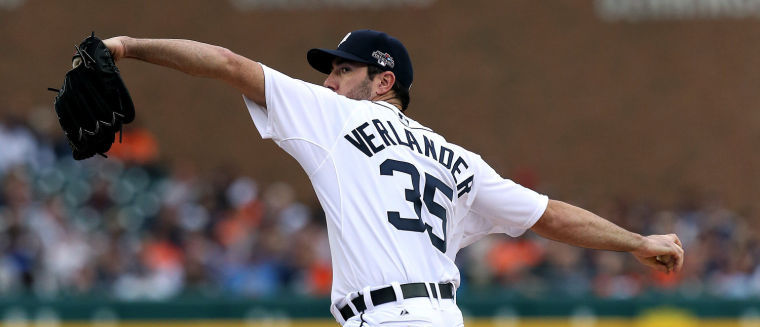Striking the competition; Tigers’ pitching will devour hitters
February 11, 2014
Pitchers and catchers have started to report to spring training, signaling the beginning of the 2014 baseball season.
Pitching is half the battle in baseball, and a strong starting rotation coupled with a deep bullpen can secure a team’s playoff chances.
While they did not win the 2013 World Series, the Detroit Tigers challenged the champion Boston Red Sox in a six-game American League Championship Series. In those six games, the Red Sox averaged just above three runs per game, which is significantly low for the team that led the league in runs scored in the regular season.
This year, the Tigers’ four top starters, Max Scherzer, Justin Verlander, Anibal Sanchez, and Rick Porcello all return to the rotation. Scherzer was the clear ace last year, going 21-3 with a 2.90 ERA in over 200 innings pitched. However, Verlander has been the ace of the staff for a while, which makes the Tigers pitching staff the most formidable in the league. One ace is enough, but having two in a five-man rotation is unfair.
Sanchez is no joke either, and while he is not at the rank of an ace, he still performs at a high level consistently enough to make him a scary number three starter. Scherzer, Verlander and Sanchez all finished with over 200 strikeouts apiece last season, which makes it very difficult for opposing hitters to get on base or to drive in runs.
Furthermore, all four pitchers logged at least 175 innings last season, which is something that few teams can claim. Only the Cincinnati Reds had four pitchers who lasted at least 175 innings last season, according to mlb.com. These pitchers are durable in that they can stay healthy to pitch in enough games to total that many innings. They are also reliable because they can shut down teams even after multiple trips through the lineup.
The Tigers’ bullpen certainly is grateful for the extra rest that the starting rotation allows. Yet, if the pitchers in that bullpen had to be used, they would still do about as good of a job stopping opposing hitters.
Most significantly, the Tigers still have Drew Smyly, who had a 6-0 record last season and a 2.37 ERA. He is also a left-hander, and dominant southpaw relievers are highly regarded in the big leagues.
Detroit also added closer Joe Nathan, who just finished last season with the Texas Rangers with a 1.39 ERA.
The strikeouts, the wins, and the low amounts of runs allowed are all products of the strong pitching staff in Detroit. The Tigers have something else on their side that makes their pitching staff even better than others.
Their offense finished second in runs scored last season, thanks in large part to former Triple Crown winner Miguel Cabrera. The Tigers traded first baseman Prince Fielder to the Texas Rangers for second baseman Ian Kinsler in the offseason, which puts more pressure on the pitching staff to allow less runs in Fielder’s absence. However, Kinsler is capable of hitting home runs as well, which will make up for Fielder’s departure.
The Tigers are in position to make another playoff run in 2014, with a veteran pitching staff that rivals any in the league, and a lineup built to support the lights-out crew on the mound.









